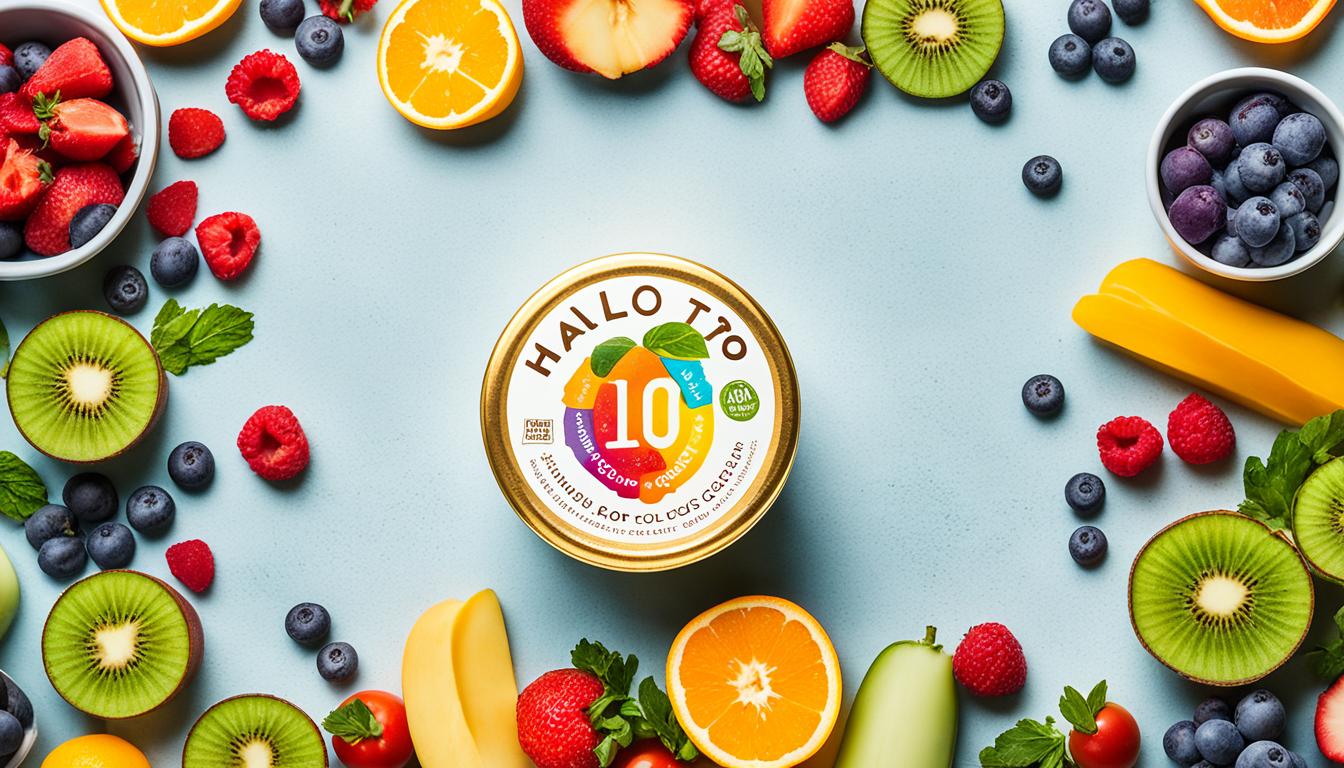Yes, ice cream can go bad. While it may still be safe to eat for some time, its quality diminishes quickly. Unopened store-bought varieties last 2 to 4 months, while homemade ice cream lasts about a month. Once opened, consume it within 7 to 10 days for the best experience. Keep an eye out for signs of spoilage, like ice crystals or strange odors. Proper storage is essential—store it in airtight containers in the coldest part of your freezer. If you want to avoid waste and disappointment, you'll find more tips on extending its freshness.
Key Takeaways
- Ice cream can go bad if it has been thawed and left above 40°F for over 2 hours, posing a bacterial risk.
- Signs of spoilage include ice crystals, a sticky exterior, or a gooey texture indicating potential bacterial growth.
- Strong odors or off flavors are indicators that ice cream should be discarded for safety reasons.
- Homemade ice cream typically lasts about 1 month, while opened commercial varieties should be consumed within 7-10 days for optimal quality.
- Freezer burn can affect flavor and texture, making ice cream dry and grainy, although it may still be safe to eat.
How Long Does Ice Cream Last?
When it comes to how long ice cream lasts, you can generally expect unopened commercial varieties to stay good for 2 to 4 months in the freezer.
Proper storage is essential to maintaining its quality, similar to the best practices for butter freshness.
Homemade ice cream, on the other hand, has a shorter shelf life of about 1 month due to the lack of preservatives.
Once you open that tub, it's best to enjoy the ice cream within 7 to 10 days for ideal quality, although it can still be safe to eat for up to 1 to 2 months if stored properly.
Signs of Spoilage

Even the best-stored ice cream can show signs of spoilage over time. One key indicator is the presence of ice crystals on the surface, which suggests freezer burn. This can seriously affect the texture and flavor, making your ice cream less enjoyable.
If you notice a sticky or icy exterior on the container, it's another sign that spoilage may have occurred. Additionally, ice cream enthusiasts know that the quality of ingredients plays an essential role in freshness; consequently, sustainable sourcing can help guarantee that your ice cream maintains its intended flavor profile.
Gooey textures or large ice formations could indicate bacterial growth, meaning it's safer to discard the ice cream. Additionally, strong odors coming from the ice cream are a red flag for contamination. If your ice cream smells off, it's best to evaluate it carefully before considering a taste.
Another significant sign is a change in texture. If it has a grainy texture instead of its usual creamy consistency, it's likely time to toss it out.
These changes in texture and odor can help you determine whether your ice cream is still good or should be thrown away. Always trust your senses—if something feels or smells wrong, it's better to err on the side of caution.
Safe Storage Practices

To keep your ice cream fresh, store it in the coldest part of your freezer, ideally at the back where temperatures stay consistently below 0°F (-18°C).
It's important to guarantee that the freezer maintains a clean environment around it, similar to how you'd position air purifiers for ideal airflow.
Use airtight containers to reduce exposure to air and moisture, helping you avoid freezer burn.
Remember to cover the surface with plastic wrap or wax paper before sealing to maintain the perfect texture.
Ideal Freezer Temperature
Maintaining the ideal freezer temperature is vital for keeping your ice cream fresh and delicious. The perfect temperature for storing ice cream is consistently below 0°F (-18°C). This helps guarantee maximum freshness and minimizes bacterial growth. To achieve this, store your ice cream in the coldest part of the freezer, typically at the back or bottom, where the temperature remains stable.
Avoid placing your ice cream near the freezer door. This area is prone to temperature fluctuations that can compromise the quality of your ice cream. Regularly monitoring and maintaining the freezer temperature can extend the shelf life of your ice cream, preserving its flavor and texture.
Using airtight containers is also important in preventing moisture exposure and air, which can lead to freezer burn. By sealing your ice cream properly, you can keep it tasting just as delightful as when you first bought it.
Airtight Container Usage
How can you guarantee your ice cream stays fresh and delicious for longer? The secret lies in using an airtight container. This simple practice can greatly enhance your ice cream experience by preventing freezer burn and moisture exposure.
Here are four key tips to keep in mind:
- Choose the Right Container: Opt for a dedicated airtight container designed to minimize air exposure.
- Cover with Plastic Wrap: Before sealing, lay plastic wrap directly on the surface of the ice cream to reduce air contact.
- Seal Freshness: Make certain the lid is securely fastened after each use to maintain a consistent freezer environment.
- Use an Ice Cream Scoop: Scoop out portions cleanly to avoid introducing unwanted air and moisture.
Tips to Extend Freshness

While ice cream can be a delightful treat, it can also lose its appeal if not stored properly. To guarantee your delicious ice cream maintains its creamy texture and finest taste, follow these tips to extend freshness.
First, always seal ice cream with plastic wrap or wax paper before putting the lid on. This minimizes air exposure and helps prevent ice crystal formation.
Next, store ice cream in the coldest part of the freezer, typically at the back. This keeps the temperature consistent and prolongs freshness. Limit the time you leave it out during serving, as temperature fluctuations can lead to spoilage.
Using airtight containers is essential to keep your ice cream sealed and protected from moisture and air, which can cause freezer burned ice.
For the best experience, consume opened ice cream within 7-10 days. Quality tends to decline after six weeks, so if you want to enjoy your treat, keeping it fresh is key.
Freezer Burn Effects

Freezer burn can greatly impact your ice cream, altering its flavor and texture. When ice cream is exposed to air, moisture loss occurs, leading to the formation of ice crystals on the surface. Although this ice cream is safe to eat, you might find the experience rather stale.
Here are some key effects of freezer burn:
- Altered Flavor: The flavor can become muted or off, making it less enjoyable.
- Grainy Texture: You'll notice a dry, grainy texture instead of the creamy consistency you expect.
- Ice Crystals Formation: A thick layer of ice crystals can develop, indicating significant moisture loss.
- Quality Compromise: While you can blend freezer-burned ice cream into milkshakes, the overall quality won't match fresh ice cream.
Regular inspection of your ice cream can help identify these signs early. Once you spot freezer burn, you can decide whether to consume or dispose of it.
When to Discard Ice Cream

Knowing when to discard ice cream can save you from a disappointing dessert experience. If your ice cream has thawed and remained above 40°F for over 2 hours, it's time to throw it away due to the risk of bacterial growth.
Look for thick layers of ice crystals on the surface; this indicates that the ice cream has gone bad and should be discarded. Even if the ice cream feels cold, visible ice crystals can signal quality loss. In this case, assess taste and texture before indulging. If you detect any off flavors or textures, it's best to dispose of the ice cream.
Freezer burn, which appears as ice crystals, doesn't always mean the ice cream is unsafe, but significant quality loss may warrant disposal. Additionally, if there's a power outage that causes softening and refreezing of your frozen treat, it's wise to discard it.
Always store ice cream in the coldest part of your freezer to maintain its quality. By being vigilant about these signs, you can guarantee your ice cream remains a delightful indulgence rather than a questionable dessert choice.
Frequently Asked Questions
How Do You Know if Ice Cream Is Bad?
To know if ice cream's bad, check for a sticky exterior, strong odors, or unusual flavors. If it's gooey or has large ice crystals, it's best to discard it for safety. Always trust your senses!
Is It Okay to Eat Expired Ice Cream?
Imagine indulging in a frosty treat—expired ice cream can still be safe if stored right, but check for odd textures or smells. If it looks or smells off, it's best to toss it.
Will Ice Cream Go Bad in the Freezer?
Yes, ice cream can go bad in the freezer. If it's stored improperly or for too long, you'll notice changes in flavor and texture. Keep it sealed and maintain a consistent freezer temperature for best results. Additionally, ice cream expiration dates should be followed closely. Even if the ice cream looks and smells fine, it’s best not to consume it past the expiration date. Pay attention to any signs of freezer burn, crystallization, or strange odors, as these could indicate that the ice cream has gone bad.
How Do You Know When Ice Cream Isn't Good Anymore?
You'll know ice cream isn't good anymore if you see ice crystals, a gooey texture, or strong odors. If it tastes off or has a sticky exterior, it's best to toss it out.
Conclusion
Ultimately, while ice cream can bring joy to your taste buds, it can also become a source of disappointment if it spoils. By recognizing the signs of spoilage and practicing safe storage, you can savor every scoop without worry. Remember, a little care goes a long way in extending freshness, but if it shows signs of freezer burn or an off taste, it's best to say goodbye. Enjoy your treats, but don't ignore their needs!










